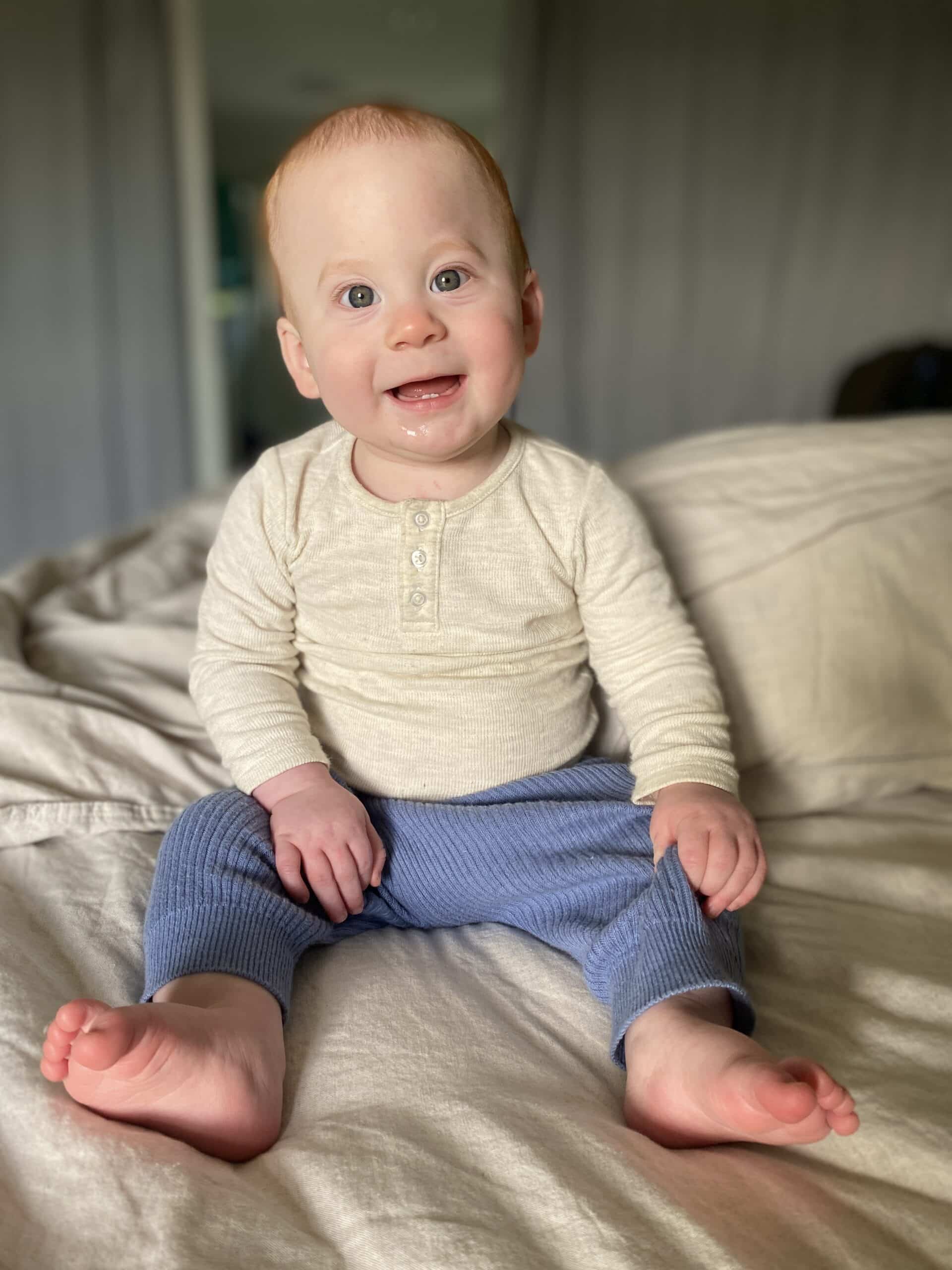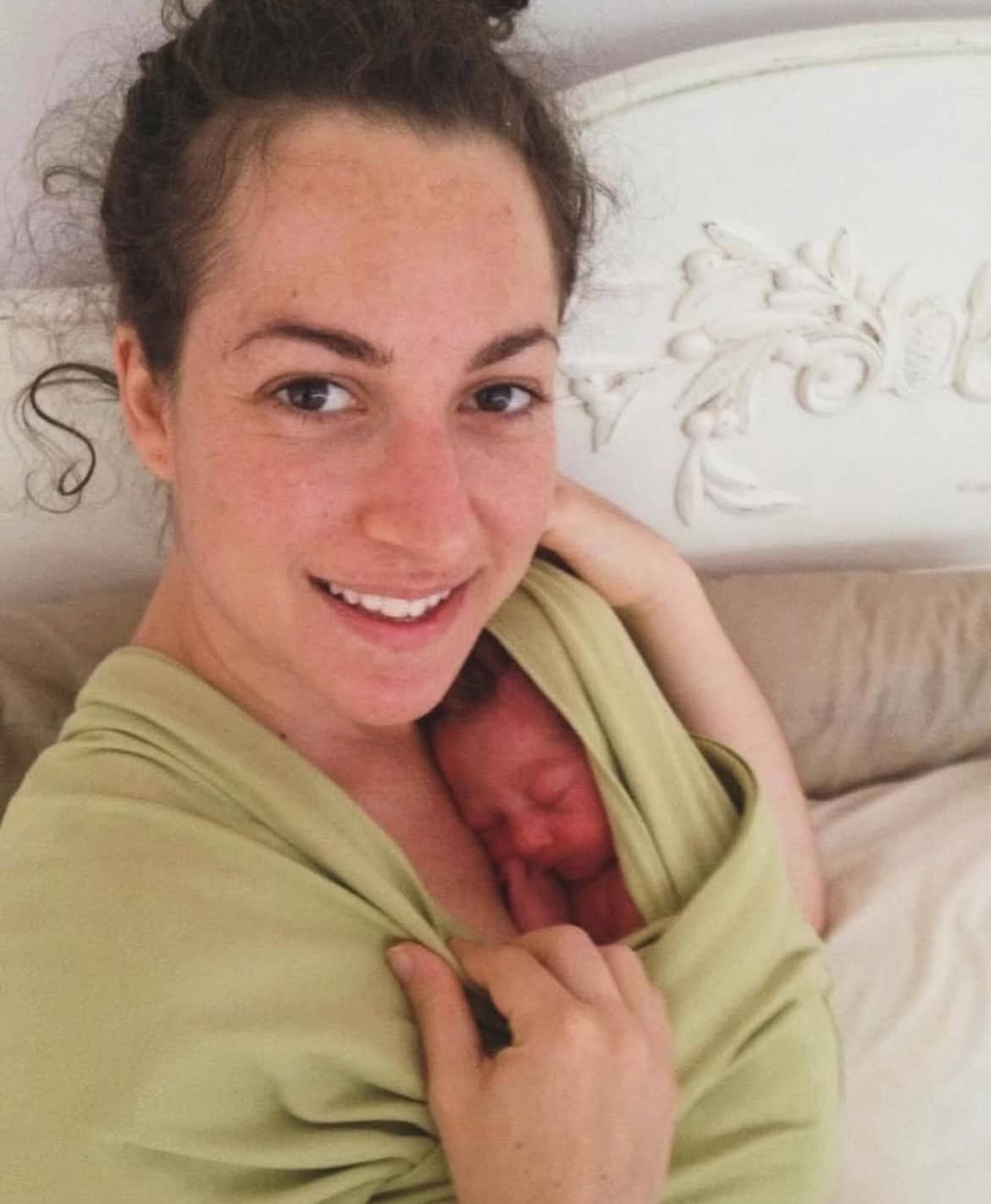Podcasts Genevieve – PCOS, private obstetrician, hematoma, induction, epidural, episiotomy, postpartum haemorrhage
EPISODE 504
Genevieve – PCOS, private obstetrician, hematoma, induction, epidural, episiotomy, postpartum haemorrhage

“I’m a type A personality so I treated conception like a marathon; I wanted to have my body and hormones in the best possible condition. I have PCOS so I was doing acupuncture, taking hormones and doing my best to balance my hormones before we started trying and it worked; I conceived in the second month. My cycle has always been like clockwork which is strange and ultimately delayed my PCOS although I had other symptoms; weight gain and hair loss. I was hesitant to celebrate because I knew nothing was guaranteed.
“I started bleeding at about 5-6 weeks and it lasted for about seven weeks. It was like a light period and quite constant. They found a hematoma in my uterus which was the cause of the bleeding but whenever you google bleeding in pregnancy, every result points to miscarriage.
“My obstetrician specialises in high risk pregnancies and I felt comforted by her expertise and really loved her team of midwives. I had the best second trimester; I had powerful goddess energy and I felt amazing. My third trimester was tough; my baby was big, my belly was huge and towards the end of my pregnancy I had to use a walking stick to get around.
“At 38 weeks we discussed induction and at 39 weeks we booked the induction because my cervix had already started thinning. I went into spontaneous labour beforehand. I woke up at 1am and thought my waters had broken so we rushed to the hospital and that’s when the midwives confirmed it was the mucous plug. We went home and then exactly 24 hours later my waters broke and it was like the movies; it was literally gushing. I was so excited because I just didn’t want to be pregnant anymore. I got in the shower to wash my hair, took my time, I put on a movie and just pottered around the house till about 4am. We got to hospital at 6am and they admitted me but at this stage I was only having light contractions.
“They hooked me up to the syntocinon drip and the contractions were intense; they were coming every 90 seconds. Time was abstract and my doctor came in after three hours and she did a vaginal examination and I was still 4cm which was so disappointing. I wasn’t coping so the midwives suggested the epidural and I agreed. Once it was in it was the best sensation of my life. I felt like I got to reclaim the birth at that stage, I had a nap and we set up the room as we’d planned. By 4pm I started to push but unfortunately I didn’t really connect with the midwife who was supporting me and she was telling me to hold my breath and that’s not what I’d planned but I didn’t really advocate for myself in that moment.
“I was pushing for 45 minutes and my obstetrician confirmed he was posterior and stuck. She told me I needed some help to get him out so she tried to manually turn him but that didn’t work so she used the vacuum and I had an episiotomy. I felt like I could get him out and when he was born he had a mark on his forehead where he was pressing into my pelvic bone. I haemorrhaged but they didn’t tell me at the time; I only found out from reading my notes that I’d had an episiotomy and lost one litre of blood. I learnt a lot about my birth during my recovery; I really wish I was debriefed after birth. I felt like I was a third-party to my own birth.
I’d assumed that breastfeeding was something everyone could do but it wasn’t working for me. The midwives tried to help me express but I just didn’t have anything so I gave him formula although the fact that I had to sign a form to say that formula wasn’t as good as breastmilk was deplorable. I saw lactation consultants, I took medication and I pumped for six weeks to at least give him a bottle of breastmilk. The second I stopped trying I felt so much more relaxed and that I could just enjoy my baby. I had to go through a bit of a journey to accept that breastfeeding wouldn’t work for me.”

Image by Screenshot

Image by Screenshot

Image by Screenshot
Topics Discussed
Epidural, Episiotomy, hematoma, Induction, One baby, PCOS, Postpartum haemorrhage (PPH), Private obstetrician
Episode Sponsor
If you’re pregnant, we encourage you to start thinking about your birth recovery now. You need more support in the fourth trimester (the 12 weeks after birth) than you do in pregnancy which can be surprising to many new mothers. It’s for this reason that Bare Mum began and now they offer a beautiful collection of practical and supportive products to assist your postpartum healing.
All new mums need lower back, abdominal and pelvic floor support after birth. Bare Mum’s Postpartum Briefs gently hold you in the first days and weeks, helping you feel confident. Endorsed by the Australian College of Midwives and the Australian Physiotherapy Association, they offer a unique pocket design so you can insert a warm or cold pack to offer soothing relief and assist with caesarean wound or perineal healing.
Ideal for caesarean and vaginal birth recovery, Bare Mum Postpartum Briefs are soft, stretchy, and supportive, offering you essential post-birth care. They’re a must-have for your hospital bag.
Bare Mum is offering you 15% off storewide with the discount code ABS2024
Categories
Related Products
-
Birth Combs: Harness Your Body’s Natural Pain Relief
$24.95Crafted from smooth, natural wood, our birth combs activate specific pressure points in your hands that trigger your body’s innate pain-relieving responses.
Join the conversation
Sign up to get the latest updates, freebies, podcast releases straight into your inbox
@AustralianBirthStories
Follow along with us
@AustralianBirthStories
Follow along with us
@AustralianBirthStories
Follow along with us
@AustralianBirthStories
Follow along with us
@AustralianBirthStories
Follow along with us
@AustralianBirthStories
Follow along with us
@AustralianBirthStories
Follow along with us
@AustralianBirthStories
Follow along with us
@AustralianBirthStories
Follow along with us
@AustralianBirthStories
Follow along with us
@AustralianBirthStories
Follow along with us
@AustralianBirthStories
Follow along with us






